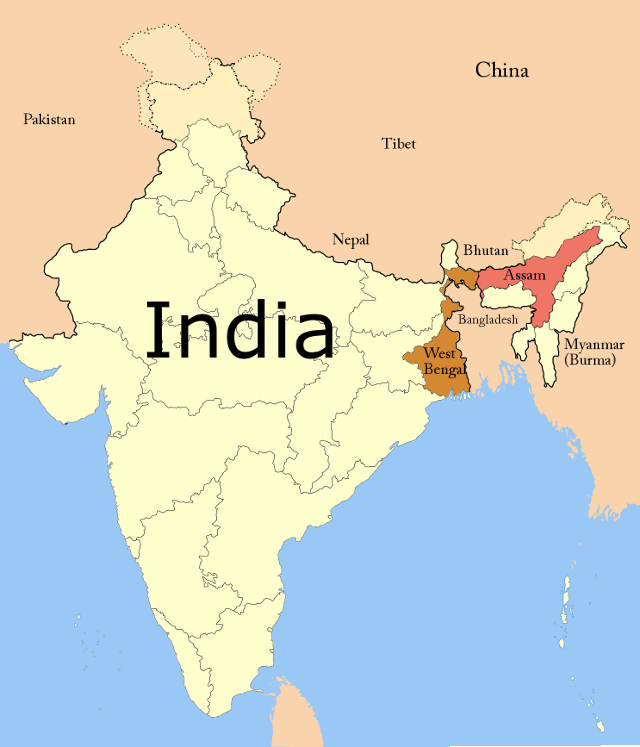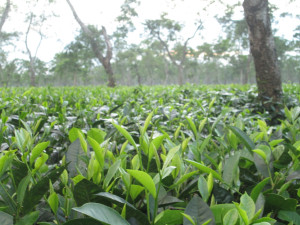Teas from the three main growing regions of India, Nilgiri, Darjeeling, and Assam, have become highly regarded over the years, forming the base to many popular teas including English and Irish Breakfast teas as well as great stand-alone specialty teas. Known for its black tea, the Assam region produces tea with a distinct malty taste, known for its briskness (which by the way is another way of simply saying that its taste makes you sit up and take note vs having a flat, dull, or otherwise non-memorable taste). Tea is produced in this region comes from some 600+ tea gardens and is manufactured both as CTC (crush, tear, curl) as well as orthodox or specialty tea. The sheer volume of tea produced in Assam contributes substantially to making India the second largest producer of tea after China. While known almost exclusively for its black teas, it should be noted that the Assam region of India also produces some green and white orthodox teas.
Assam Tea History
The history of tea in India likely dates back thousands of years, as it does for its neighbors in Nepal and China. However, most agree that commercial development of tea in Assam began with the British in the 1830’s when Britain, and in particular the East India Company, which wanted to find cheaper alternatives to Chinese tea, started looking for tea and suitable growing conditions in other corners of the empire. Since it appeared the climate was similar to that of tea growing regions in China, the British imported seeds and plants of Camellia sinensis var. sinensis, the variety found in China. This, unfortunately for the East India Company, turned out to be a failure, as the variety wouldn’t grow successfully in India. Around the same time, beginning in 1815, Major Robert Bruce discovered a plant in Assam that he thought was likely the tea plant growing in the wild. It wasn’t until nearly 30 years later, in 1834 that his brother Charles Alexander Bruce successfully got testing and recognition that the plant was indeed tea. As it turns out it was simply another variation of C. sinensis, the assamica variety. Much more recently, using DNA sequencing techniques, research is suggesting that C. sinensis var. assamica (Assam), along with C. sinensis var. sinensis (China) and many other varieties, are in fact all related to a single parent from Mongolia, which migrated over time to give us the varieties we see today.
Terrior of Assam Tea
It is the terrior found in Assam, combined with the C. sinensis var. assamica variety, which produces the significantly different taste that has become so highly regarded. The leaves are larger in Assam and the nutrients in the soil lead to different taste and flavor compounds in the leaves. Whereas in China tea is often grown at higher elevations, in Assam it is grown at low elevations along floodplains with sandy, nutrient rich soils which are typical of floodplains. Also unlike tea grown in other parts of the world, it is the second flush, not the first, which is preferred. The second flush is considered to produce a sweeter liquor with a more robust full bodied taste.
Given the proximity to other great tea production regions like Darjeeling, Nepal, and China, along with the historical thirst for tea driven by colonialism, it is really little wonder that Assam has developed to play a major role in the global tea trade. We are looking forward to further exploration of Assam and the specialty teas to be found from this great region.





